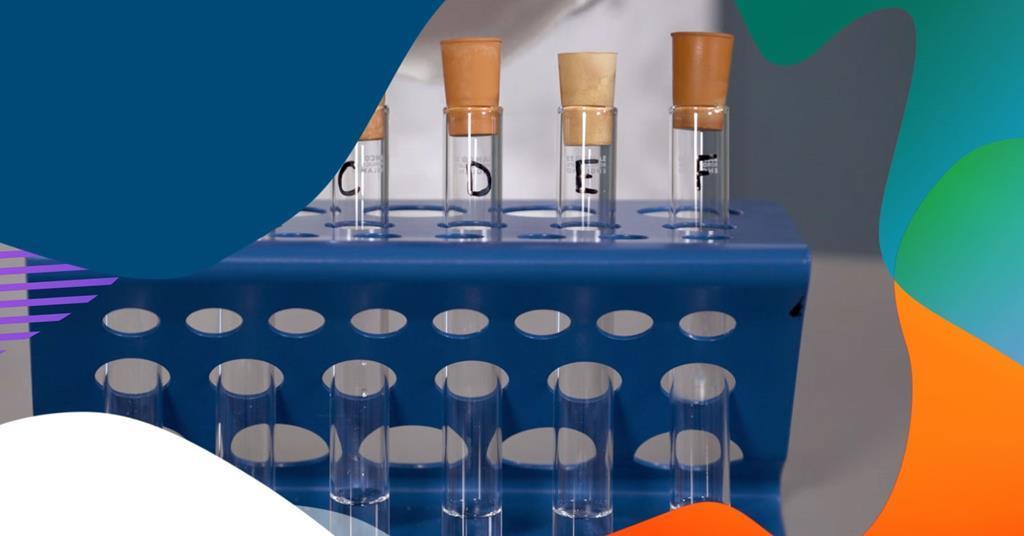Abstract
The experiment aims to identify the presence of carboxylic acids in a given sample using the sodium carbonate test. Carboxylic acids react with sodium carbonate to produce effervescence due to the liberation of carbon dioxide gas.
Introduction
Carboxylic acids are organic compounds containing a carboxyl functional group (-COOH). They are commonly found in many natural substances and have diverse applications in industry and everyday life. The sodium carbonate test is a simple and effective method to distinguish carboxylic acids from other organic compounds based on their unique reaction with sodium carbonate.
Details of the Experiment
Procedure
- Add a small amount of the given sample to a test tube.
- Add a few drops of sodium carbonate solution to the test tube.
- Observe any effervescence or bubbling in the solution.
- If effervescence occurs, it indicates the presence of a carboxylic acid.
Observations and Calculations
Note the presence or absence of effervescence in the test tube after adding sodium carbonate solution. If effervescence occurs, it confirms the presence of carboxylic acids in the sample.
Conclusion
The sodium carbonate test is a reliable method for identifying carboxylic acids based on their characteristic reaction with sodium carbonate to produce carbon dioxide gas.
Precautions
- Handle chemicals with care and use appropriate protective equipment.
- Avoid inhalation of fumes and contact with skin or eyes.
- Dispose of chemical waste properly according to laboratory guidelines.
Short Questions with Answers
- What is the functional group present in carboxylic acids?
Answer: The carboxyl functional group (-COOH). - What does the sodium carbonate test detect?
Answer: The presence of carboxylic acids. - What is the characteristic observation in the sodium carbonate test for carboxylic acids?
Answer: Effervescence or bubbling due to the liberation of carbon dioxide gas. - Why is sodium carbonate used in the test?
Answer: Sodium carbonate reacts with carboxylic acids to produce carbon dioxide gas. - What safety precautions should be followed during the experiment?
Answer: Handle chemicals with care, wear protective equipment, and follow proper disposal procedures for chemical waste. - What is the chemical equation for the reaction between carboxylic acids and sodium carbonate?
Answer: RCOOH + Na2CO3 → RCOONa + CO2 + H2O. - What is the purpose of observing effervescence in the sodium carbonate test?
Answer: Effervescence confirms the presence of carboxylic acids in the sample. - How does the sodium carbonate test help in identifying carboxylic acids?
Answer: It provides a characteristic reaction specific to carboxylic acids, allowing for their differentiation from other organic compounds. - What type of chemical reaction occurs in the sodium carbonate test?
Answer: Acid-base neutralization reaction. - What precaution should be taken when handling sodium carbonate solution?
Answer: Avoid contact with skin or eyes and rinse with water if contact occurs. - Why is it important to add only a small amount of the sample to the test tube?
Answer: To avoid excessive bubbling or splashing during the reaction. - What is the appearance of effervescence in the sodium carbonate test?
Answer: Formation of bubbles or fizzing in the solution. - How can you confirm the presence of carboxylic acids if effervescence is observed?
Answer: Conduct additional confirmatory tests such as the formation of a carboxylate salt. - What other chemical tests can be used to identify carboxylic acids?
Answer: Tests such as the ferric chloride test and the litmus test can also be employed. - What is the significance of the sodium carbonate test in organic chemistry?
Answer: It is a simple and reliable method for preliminary identification of carboxylic acids in organic compounds. - What precautions should be taken when disposing of chemical waste?
Answer: Follow laboratory guidelines for proper disposal, including neutralization and appropriate container labeling. - How can the sodium carbonate test results be confirmed?
Answer: Conduct repeat tests with different samples and perform confirmatory tests for carboxylic acids. - What is the expected observation if no effervescence is observed in the sodium carbonate test?
Answer: The absence of effervescence suggests the absence of carboxylic acids in the sample. - What factors can affect the outcome of the sodium carbonate test?
Answer: Factors such as sample purity, concentration, and reaction conditions can influence the test results. - Why is it important to wear protective equipment during the experiment?
Answer: To minimize the risk of chemical exposure and injury.
Multiple Choice Questions (MCQs) with Answers
- What does the sodium carbonate test detect?
- a) Alcohols
- b) Aldehydes
- c) Carboxylic acids
- d) Ketones
- Answer: c) Carboxylic acids
- What is the characteristic observation in the sodium carbonate test for carboxylic acids?
- a) Formation of a precipitate
- b) Change in color
- c) Effervescence
- d) No observable change
- Answer: c) Effervescence
- Which of the following compounds does not react with sodium carbonate to produce effervescence?
- a) Ethanol
- b) Ethanoic acid
- c) Propanoic acid
- d) Butanoic acid
- Answer: a) Ethanol
- What type of reaction occurs between carboxylic acids and sodium carbonate?
- a) Oxidation
- b) Reduction
- c) Neutralization
- d) Esterification
- Answer: c) Neutralization
- Why is it important to observe effervescence in the sodium carbonate test?
- a) To confirm the presence of water
- b) To identify the type of carboxylic acid
- c) To confirm the presence of carboxylic acids
- d) To identify the concentration of the acid
- Answer: c) To confirm the presence of carboxylic acids
🔗 Other Useful Links
- News By Amurchem
- Free Web Development Course
- All-in-One Exam Prep Portal
- Articles by Amurchem
- Grade 12 Section
- Grade 11 Section
- Grade 10 Section
- Grade 09 Section
- Advanced Artificial Course
- Home and Online Tuition
- Labs By Amurchem
- Science Lectures By Amurchem
- Social Media Executive Course
© 2025 AmurChem. All rights reserved.






